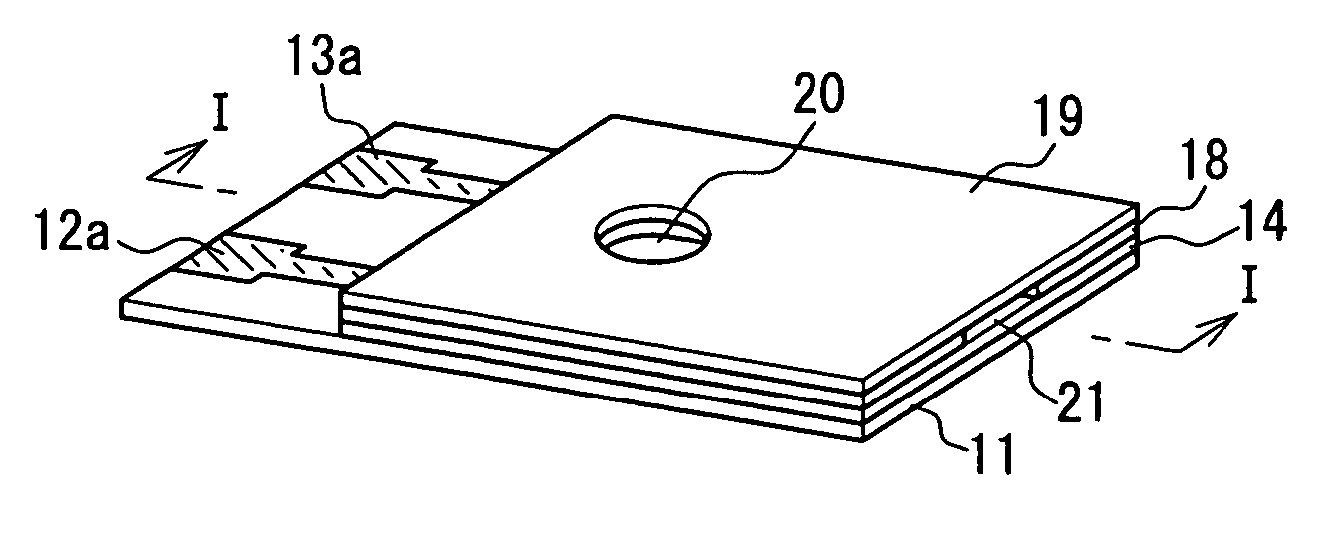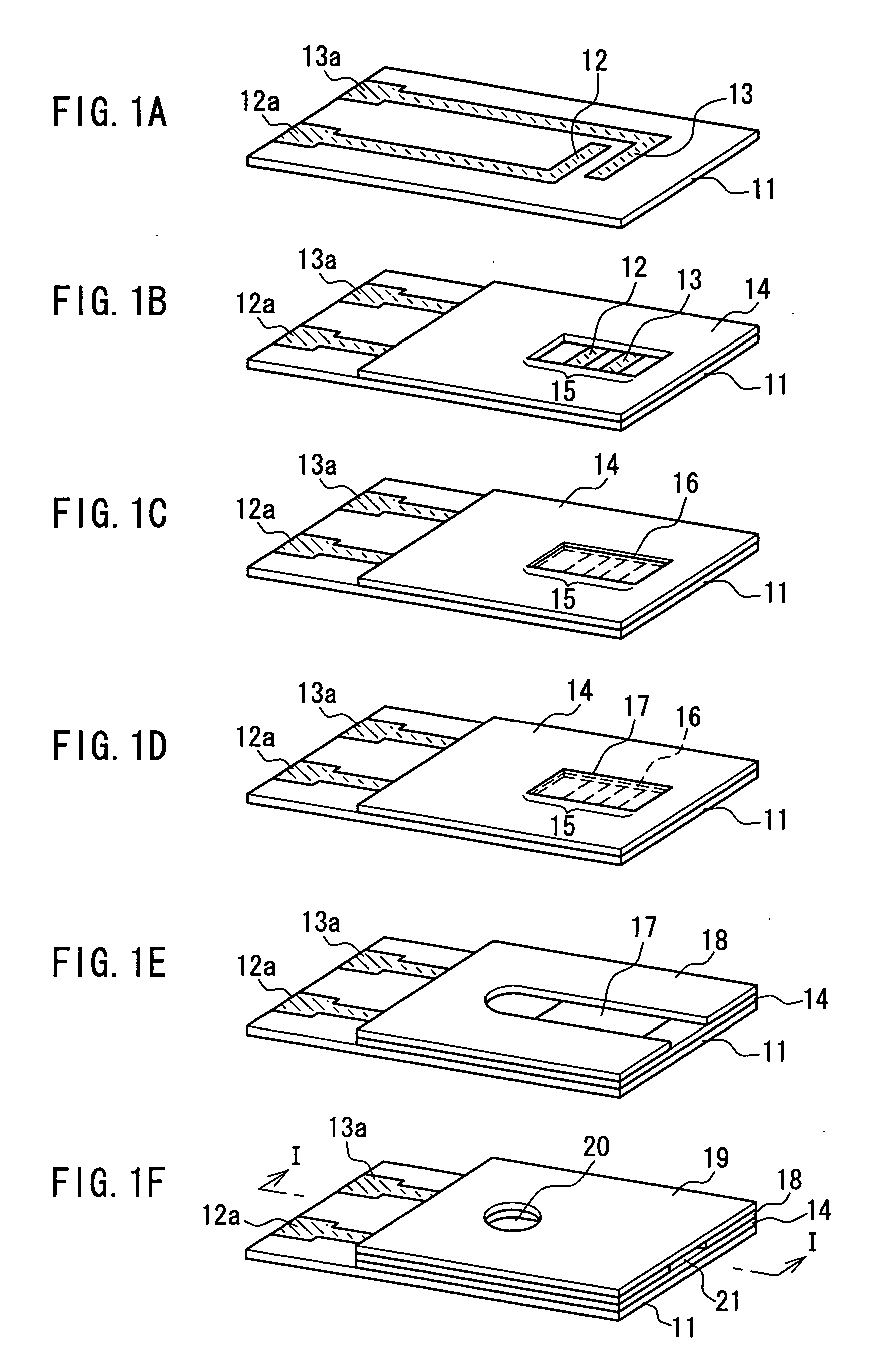Biosensor and method for producing the same
- Summary
- Abstract
- Description
- Claims
- Application Information
AI Technical Summary
Benefits of technology
Problems solved by technology
Method used
Image
Examples
embodiment 1
[0057] An example of a first method for producing a biosensor according to the present invention will be described with reference to FIG. 1 and FIG. 2. FIGS. 1A to 1F are perspective views showing a series of major steps in the production of a biosensor. FIG. 2 is a sectional view of the biosensor taken in the arrow direction of line I-I in FIG. 1F. In FIGS. 1A to 1F and FIG. 2, the same components are given the same reference numerals.
[0058] As shown in FIG. 1F and FIG. 2, this biosensor 1 includes: a substrate 11; an electrode system including a working electrode 12 having a lead portion 12a and a counter electrode 13 having a lead portion 13a; an insulating layer 14; an inorganic gel layer (oxidation-preventing layer) 16 containing a mediator, a layered inorganic compound, and a surfactant; an enzyme reagent layer 17 containing an oxidoreductase; a spacer 18 having an opening; and a cover 19 having a through hole 20. As shown in FIG. 1B, a detecting portion 15 is provided on one...
example 1
[0116] A glucose sensor having the same structure as that shown in FIG. 1F was produced in the following manner.
[0117] First, a substrate made of PET (with a length of 50 mm, a width of 6 mm, and a thickness of 250 μm) was provided as an insulating substrate 11 of a glucose sensor, and a carbon electrode system including a working electrode 12 and a counter electrode 13, each of which had a lead portion, was formed on one surface of the substrate by screen printing.
[0118] Next, an insulating layer 14 was formed on the electrodes in the following manner. First, polyester as an insulating resin was dissolved in carbitol acetate as a solvent so that its concentration became 75 wt % to prepare insulating paste, and the thus-obtained insulating paste was screen-printed on the electrodes. The printing was performed under the conditions of 300 mesh screen and a squeegee pressure of 40 kg, and the amount of the insulating paste used for the printing was 0.002 ml per cm2 of the electrode a...
example 2
[0124] In Example 2, using the glucose sensor produced in Example 1, the change in response current over time was measured with regard to samples having various glucose concentrations.
[0125] Human whole blood was used to prepare liquid samples. First, the whole blood collected was left at 37° C. for about 1 day, and the glucose concentration thereof was adjusted to be 0 mg / 100 ml. Then, to this whole blood, glucose was added so as to prepare samples having various glucose concentrations (about 200, 400, and 600 mg / 100 ml). The whole blood to which no glucose was added was used as a sample having a glucose concentration of 0 mg / 100 ml. In Example 2, each of the samples was dropped on the sample supply portion 21 after the start of voltage application (200 mV) to the glucose sensor 1, and the time course of the change in response current was started to be measured after a lapse of 5 seconds from the dropping of the sample. Furthermore, in Comparative Example 2, the same measurement w...
PUM
| Property | Measurement | Unit |
|---|---|---|
| Mass | aaaaa | aaaaa |
| Molar density | aaaaa | aaaaa |
| Substance count | aaaaa | aaaaa |
Abstract
Description
Claims
Application Information
 Login to View More
Login to View More - R&D
- Intellectual Property
- Life Sciences
- Materials
- Tech Scout
- Unparalleled Data Quality
- Higher Quality Content
- 60% Fewer Hallucinations
Browse by: Latest US Patents, China's latest patents, Technical Efficacy Thesaurus, Application Domain, Technology Topic, Popular Technical Reports.
© 2025 PatSnap. All rights reserved.Legal|Privacy policy|Modern Slavery Act Transparency Statement|Sitemap|About US| Contact US: help@patsnap.com



